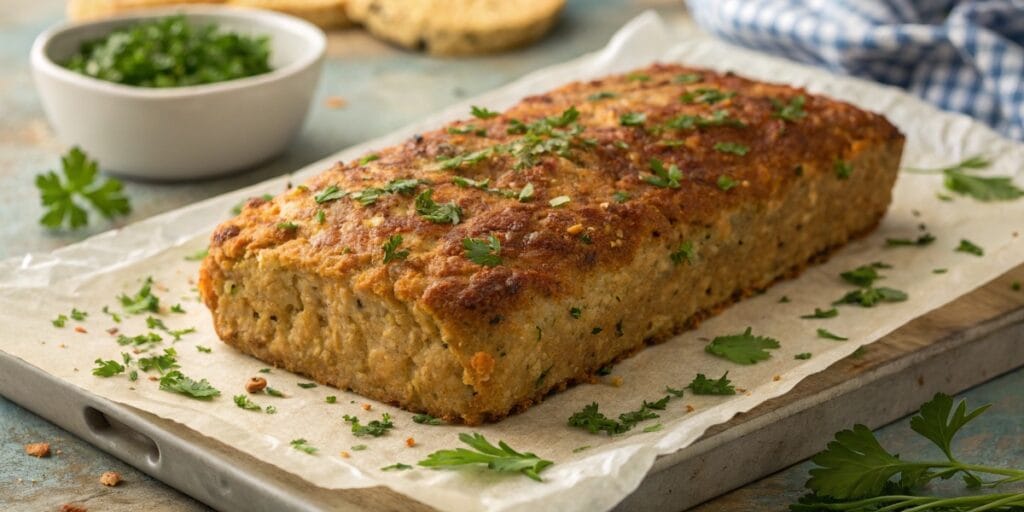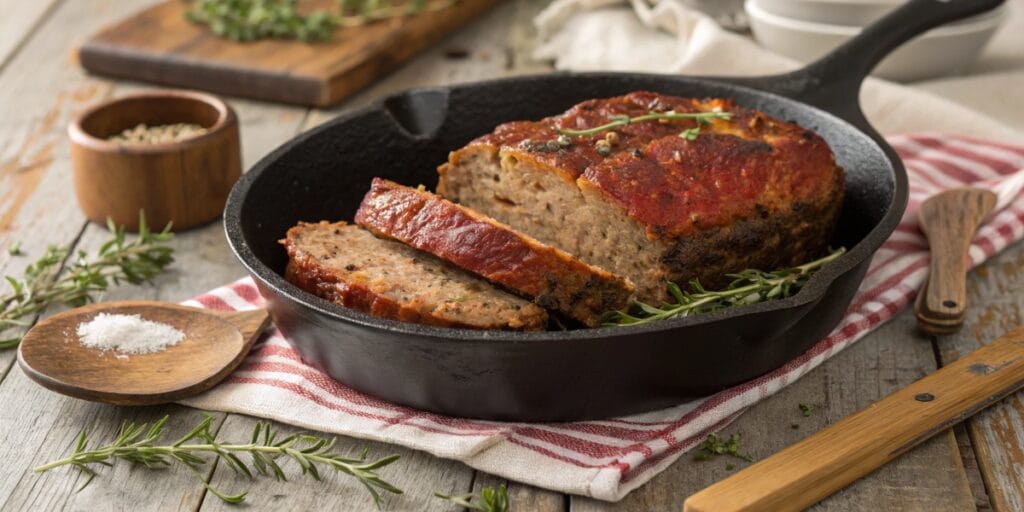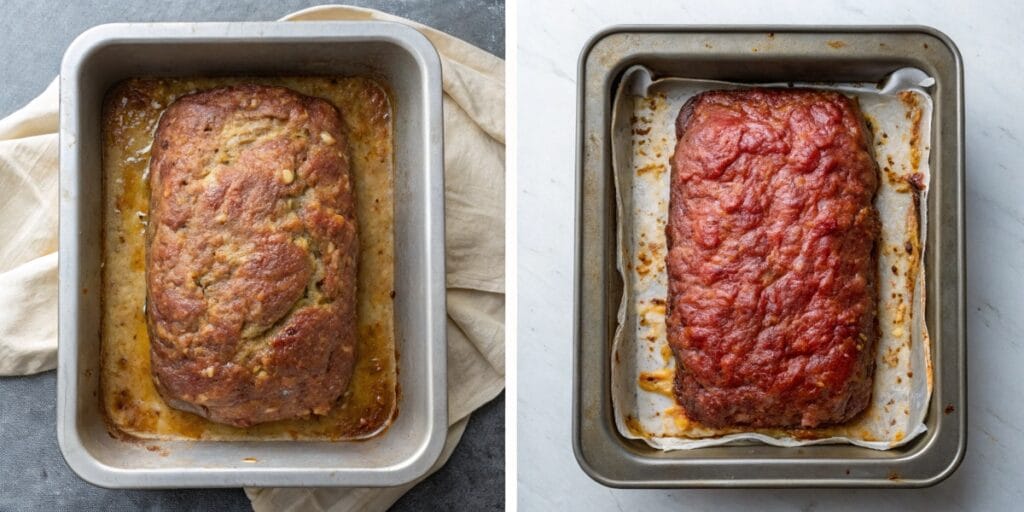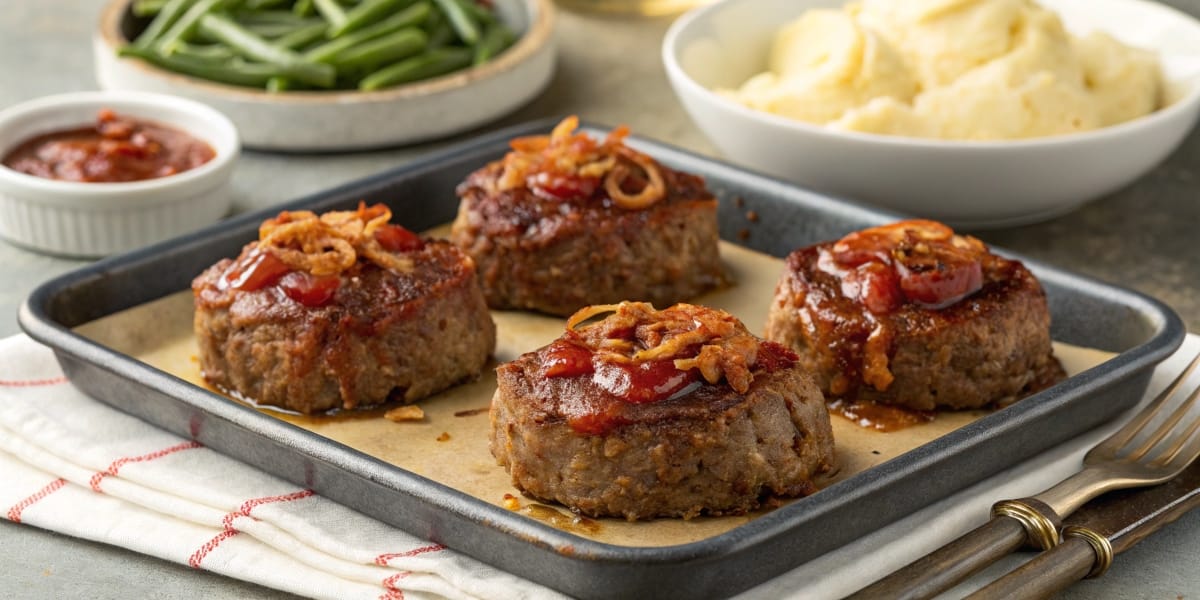Why Don’t You Want to Cook the Meatloaf in the Loaf Pan?
Introduction
Cooking meatloaf in a loaf pan might seem like the obvious choice. After all, the pan provides structure, making it easy to form and bake. However, this method is not always the best for achieving the perfect meatloaf. If you’ve ever found your meatloaf too greasy, dense, or lacking in flavor, the loaf pan might be the culprit. In this article, we’ll explore why you don’t want to cook the meatloaf in the loaf pan and consider alternative methods for cooking meatloaf. For additional meatloaf insights, explore common meatloaf mistakes.
Why Don’t You Want to Cook the Meatloaf in the Loaf Pan?
Using a Loaf Pan for Meatloaf: Pros and Cons
Cooking meatloaf in a loaf pan is the most traditional method. This approach offers several advantages:
- Maintains a uniform, compact shape.
- Makes slicing easier, especially for serving.
- Contains the juices, preventing them from spilling over.
However, it comes with significant drawbacks:
- Dense Texture: The compact nature of the loaf pan can restrict airflow, leading to a heavier, denser meatloaf.
- Greasy Finish: Fats released during cooking pool at the bottom of the pan, resulting in an oily texture.
- Limited Crust: The sides of the meatloaf remain soft and lack the flavorful crust that many enjoy.
Why Free-Form Meatloaf is a Better Option
Shaping the meatloaf by hand and cooking it on a baking sheet offers several advantages over the loaf pan method. Here’s why you don’t want to cook the meatloaf in the loaf pan and should consider a free-form technique:
- Enhanced Crust Formation: Air circulation around the meatloaf ensures all sides develop a crispy crust.
- Better Fat Drainage: Excess grease flows away from the meatloaf, preventing it from becoming overly oily.
- Even Cooking: The meatloaf cooks more uniformly without the depth of a loaf pan.
While this method requires careful shaping to maintain the loaf’s form, it often produces a superior texture and flavor. For a recipe that utilizes this method, check out our Classic Free-Form Meatloaf Recipe.

Reasons to Avoid Using a Loaf Pan for Meatloaf
1. Texture and Consistency Issues in Loaf Pans
Using a loaf pan can compress the meat mixture, limiting its ability to cook evenly. This compression often results in:
- A denser texture that feels heavy when eaten.
- Uneven moisture distribution, causing some parts to dry out while others remain soggy.
In contrast, free-form methods allow the meatloaf to cook more naturally, creating a lighter and more appealing consistency. To avoid these texture issues, read our guide on perfecting meatloaf texture.
2. Fat Accumulation in a Loaf Pan: why don’t you want to cook the meatloaf in the loaf pan
One of the most significant disadvantages of loaf pans is the way they trap fat. As the meat cooks, fats and juices collect at the bottom, leaving the meatloaf to sit in grease. This not only affects the flavor but also makes the dish less healthy.
Using a baking sheet or placing the meatloaf on a rack allows the fat to drain away. For more tips on reducing fat in cooking, visit Healthy Cooking Practices.
Additionally, if you’re looking to create a healthier meatloaf, consider using leaner cuts of meat, such as ground turkey or chicken, and incorporate moisture-retaining ingredients like grated zucchini or carrots. This ensures your meatloaf remains moist without being greasy.
3. Crust Development and Flavor Enhancement
A good crust is often the hallmark of a great meatloaf in the loaf pan. However, cooking in a loaf pan limits crust formation to the top surface. By using a free-form method, you can achieve a well-browned, flavorful crust on all sides, enhancing both texture and taste.

For tips on achieving the perfect crust, explore our article on secrets to a crispy meatloaf crust.
4. Uneven Cooking Times in a Loaf Pan
Loaf pans, due to their depth, can extend cooking times. This depth can lead to:
- Overcooked edges and undercooked centers.
- Increased difficulty in ensuring the meatloaf reaches a safe internal temperature of 160°F.
Free-form cooking provides more even heat distribution, resulting in a thoroughly cooked, safe-to-eat meatloaf. Learn more about meatloaf cooking times and temperatures.
Expert Opinions on Cooking Meatloaf: why don’t you want to cook the meatloaf in the loaf pan
Chef Recommendations for Better Meatloaf in the loaf pan
Many chefs recommend avoiding loaf pans altogether. Renowned culinary experts suggest that shaping meatloaf by hand and cooking it on a baking sheet yields better results. For instance:
- Chef Gordon Ramsay emphasizes the importance of crust formation and fat drainage in achieving a restaurant-quality meatloaf.
- America’s Test Kitchen highlights how free-form methods enhance texture and flavor.
Case Studies from Popular Recipes
Several popular recipes demonstrate the success of free-form meatloaf:
- Ina Garten’s turkey meatloaf recipe uses a baking sheet for even cooking and a rich, golden crust.
- Alton Brown’s classic meatloaf features a wire rack to ensure proper drainage and uniform heat distribution.
Alternative Cooking Techniques for Meatloaf in the loaf pan
Free-Form Method: A Superior Choice
To prepare a free-form meatloaf:
- Shape the meat mixture into a loaf on a parchment-lined baking sheet.
- Use a wire rack if possible to elevate the meatloaf and promote fat drainage.
- Bake at 350°F, checking the internal temperature with a meat thermometer.
Mini Meatloaves: Convenient and Quick
For quicker cooking and portion control, consider making mini meatloaves:
- Divide the meat mixture into smaller portions and shape them individually.
- Place them on a baking sheet or in a muffin tin.
- Bake for 20-25 minutes, or until fully cooked.
This method not only shortens cooking time but also allows for individual servings, making it ideal for family meals or meal prep.
Cast-Iron Skillet: Rustic and Flavorful
A cast-iron skillet offers another versatile option:
- Shape the meatloaf in the skillet for excellent heat retention and crust development.
- Bake or cook on the stovetop for a rustic presentation.

For additional inspiration, explore our cast-iron skillet recipes.
Frequently Asked Questions (FAQs) about : why don’t you want to cook the meatloaf in the loaf pan
- Why does meatloaf cook unevenly in a loaf pan?
- The depth of the pan restricts heat circulation, causing uneven cooking.
- Can I still achieve a crust with a loaf pan?
- While possible, it’s limited to the top surface. Free-form methods are better for an all-around crust.
- How can I prevent my meatloaf from falling apart without a pan?
- Use binding agents like eggs and breadcrumbs, and shape the loaf tightly.
- What is the best way to drain fat during cooking?
- Use a wire rack or baking sheet to allow fat to drip away from the meatloaf.
Conclusion to why don’t you want to cook the meatloaf in the loaf pan
Although cooking meatloaf in a loaf pan is convenient, it often compromises texture, flavor, and overall quality. By exploring alternative methods like free-form cooking, using a baking sheet, or even experimenting with mini meatloaves, you can elevate this classic dish. Additionally, incorporating healthier ingredients and techniques can make your meatloaf not only tastier but also more nutritious. This is why you don’t want to cook the meatloaf in the loaf pan. For more tips and inspiration, visit our Recipe Archives.

